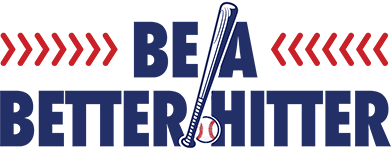In-Season Training for Baseball
This headline is synonymous with the word; Confusion. In-Season training has become somewhat of a mystery in the baseball world. Some say we should do it, some say that we shouldn’t, some say just go on a maintenance program. In my opinion, neither of these responses is valid.
Whether you are embarking on an off-season program, pre-season program, or in-season program, the most important part of each are the objectives you are trying to achieve and the plan you set in place to reach those formulated goals.
In the big leagues, we have individual goals for each player based on assessments they are put through at various times during the season. If you fail to assess each players needs, you will end up with a generic program, forgetting about each players limiting factors that will inhibit them from executing on field activities, and make them susceptible to future injury. The assessment could be as simple as analyzing their previous injury history, then putting together a training plan that helps that athlete maintain strength, power, tissue integrity, flexibility, and conditioning of that particular area of the body. This would be an extremely basic assessment, but it is a step in the right direction when creating an individualized program based on an athletes needs, not just wants.
Again staying with general assessments, a coach could act as a scout analyzing their athlete’s ability to move and make plays throughout the season, or for an in-season program throughout the pre-season, which will allow them to scout the athletes limiting factor, giving the athlete an idea of what they need to work on. An example of this would be a shortstop that lacks range to his left/right side, showing an increased need to enhance lateral movement skills. If this athlete were to be on my program, I would devise a program that not only conditions that athlete to move laterally via a series of drills, but a program that also preps the bodies musculature for the increased demands placed on the athlete to move laterally. This program would encompass strengthening of the lateral glutes, maintaining flexibility throughout the groin, while at the same time teaching the athlete the footwork needed to move laterally in the most efficient manner possible.
So now that you are starting to understand how to individualize a program, that doesn’t mean those that are coaching in a team setting can’t formulate a general program as well to complement each players personal program. At the collegiate and youth levels, all players need to possess the following qualities in order to be a successful athlete:
- Stability
- Strength
- Power
- Flexibility ( Dynamic and Static)
- Speed ( Linear and Lateral)
- Footwork/ Quickness
- Reaction Skills
- Arm Strength/ Stability
- Tissue Integrity
- Conditioning Level
All of these qualities working together create an extremely effective athlete, but only when they are working together. If you coach or play at the previously mentioned ranks, then it would be worth while to embark on a program that consists of all of the above.
When speaking about in-season baseball training though, analyze the game, what position the athlete is playing, and how much movement/repetitive movement is taking place for that athlete each game. What this simply means is, if you are a pitcher, in-season Arm Strength training might be less than that of the off-season because your throwing volume has increased dramatically. Once the in-season comes focusing on high volume of arm strengthening exercise coupled with high throwing volume will fatigue the arm and diminish recovery ability. Now for an outfielder, they might not run a ball down all week, so this would show an increased need to focus on their conditioning level.
So are we truly on a maintenance program? In my mind the term maintenance program simply means, “Don’t work as hard.” There is no reason that you can’t make gains during the season. If you think about it another way, if a player comes into camp out of shape, and you maintained their poor shape, how would they perform over time? So think about this so-called maintenance program.
In-Season gains won’t be as rapid as off-season gains, but remember the goal of the in-season: to play at a high level, day in and day out, while keeping the body strong, powerful, free from injury, and recovered. Slow, steady progression is the key to in-season success. While other teams are maintaining, probably a poor level athleticism to begin with, you and your team will be getting stronger as the season goes on. That is truly what we would like to see happen; Being strongest when the playoff’s and the championship games come around.
*A comprehensive audio program corresponding with this article is available at: www.mlstrength.com
